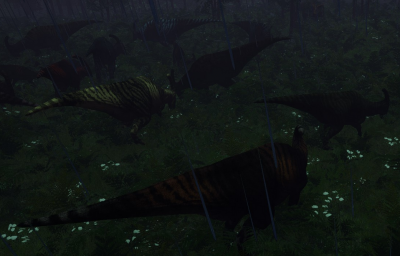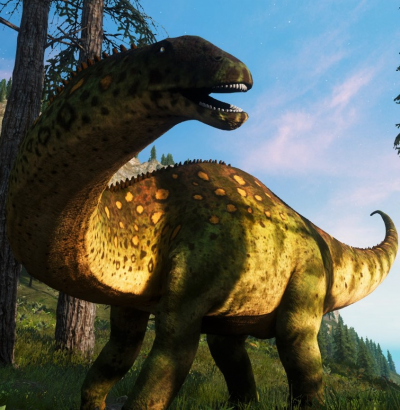Difference between revisions of "Terrestrial Creatures"
Kittennoodle (talk | contribs) |
|||
| (8 intermediate revisions by 3 users not shown) | |||
| Line 1: | Line 1: | ||
| − | [[ | + | Terrestrial creatures live on land and cannot fly. They lose substantial [[Comfort|comfort]] when venturing out into deep saltwater such as the [[Water|ocean]]. They also lose significant comfort when exposed to [[Weather|stormy weather]]. For this reason, bad weather can be a particularly perilous experience, especially when [[Aquatic Creatures|aquatic creatures]] decide to take advantage of such a situation. Many [[Maps|maps]] are designed with obstacles in mind for terrestrial creatures, be it [[Ocean|water]], ledges, or [[Foliage System|forests]]. [[Water|Low tide]] crossings are frequent on many maps, where safe terrestrial passage cannot occur when the tides rise. |
| − | [[ | + | They find all of their [[Food|food]] on land, be it consumption of [[Carcass|meat]] or [[Foliage System|terrestrial plants]]. They must consume [[Freshwater Lakes|water]] in order to satisfy [[Thirst|thirst]] for survival. Terrestrial creatures are fully adept at land travel, often being [[Movement System|swifter or more agile]] than [[Semiaquatic Creatures|semiaquatic creatures]], but are often very poor [[Swimming|swimmers]]. [[Aquatic Creatures|aquatic creatures]] are very, very poor at land travel and rapidly perish when out of water due to [[Comfort|stress]]. Some terrestrial creatures harbor [[Climbing|the ability to climb]], and many of their [[Primary Attack|primary]] and [[Secondary Attack|secondary]] attacks or abilities are based entirely on the presence of land. |
| − | |||
| − | Terrestrial creatures | ||
| − | + | [[File:Hunt.png|thumb|right|thumb|400px|border|A Tyrannosaurus rex hunts a herd of Parasaurolophus in the rain.]] | |
Terrestrial creatures lose [[Drowning|breath]] when submerged. | Terrestrial creatures lose [[Drowning|breath]] when submerged. | ||
| Line 12: | Line 10: | ||
*[[Acrocanthosaurus]] | *[[Acrocanthosaurus]] | ||
*[[Apatosaurus]] | *[[Apatosaurus]] | ||
| + | *[[Megalosaurus]] | ||
| + | *[[Oryctodromeus]] | ||
*[[Pachycephalosaurus]] | *[[Pachycephalosaurus]] | ||
*[[Parasaurolophus]] | *[[Parasaurolophus]] | ||
| − | *[[ | + | *[[Saichania]] |
| + | *[[Tyrannosaurus rex]] | ||
*[[Velociraptor]] | *[[Velociraptor]] | ||
| + | |||
| + | [[File:Apatocloseup.png|thumb|right|thumb|400px|border|]] | ||
Latest revision as of 02:31, 25 December 2021
Terrestrial creatures live on land and cannot fly. They lose substantial comfort when venturing out into deep saltwater such as the ocean. They also lose significant comfort when exposed to stormy weather. For this reason, bad weather can be a particularly perilous experience, especially when aquatic creatures decide to take advantage of such a situation. Many maps are designed with obstacles in mind for terrestrial creatures, be it water, ledges, or forests. Low tide crossings are frequent on many maps, where safe terrestrial passage cannot occur when the tides rise.
They find all of their food on land, be it consumption of meat or terrestrial plants. They must consume water in order to satisfy thirst for survival. Terrestrial creatures are fully adept at land travel, often being swifter or more agile than semiaquatic creatures, but are often very poor swimmers. aquatic creatures are very, very poor at land travel and rapidly perish when out of water due to stress. Some terrestrial creatures harbor the ability to climb, and many of their primary and secondary attacks or abilities are based entirely on the presence of land.
Terrestrial creatures lose breath when submerged.
A list of all current terrestrial creatures are given below:

